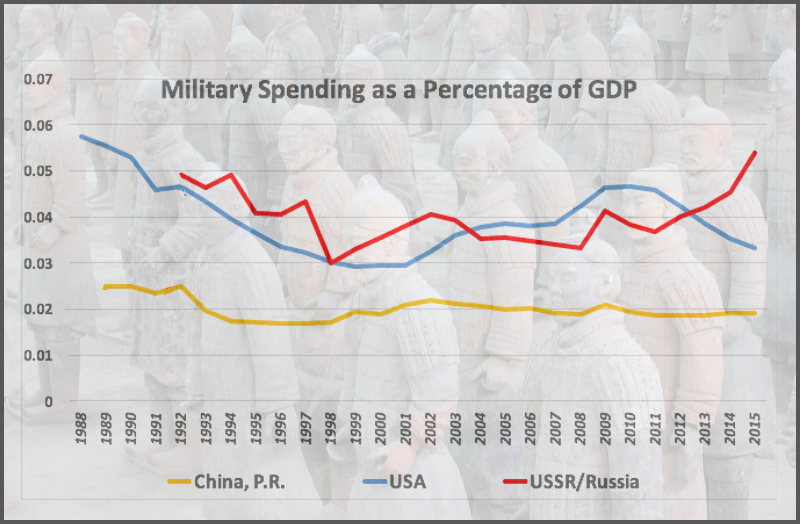Fifty-nine years ago today, the Soviet Union launched Sputnik into orbit, setting off a panic in the United States that contributed to the evolution of a “space race” between the two superpowers.
Last week, Congress held a hearing on the question of whether the United States was losing a new space race with China. Unfortunately, the witnesses seemed more interested in re-creating the alarmism of the Sputnik era than in offering Congress an accurate picture of the Chinese space program. This raises doubts about the value of the hearing’s contribution to congressional perspectives on US-China relations in space.
Cooperation vs. Competition
One of the questions discussed during the hearing was whether to permit cooperation in space between China and the United States. Science is an inherently collaborative enterprise. Knowledge grows faster when you divide the labor of learning and share the results. That’s especially true in space science because the satellites used to observe and measure the space environment are expensive to develop and deploy. China has the economic and technical resources to make important contributions to our understanding of the Earth, the solar system and the wider universe in which we live. So it is not surprising that many US space scientists would welcome opportunities for greater cooperation with colleagues in China.
Unfortunately, the US Congress restricts scientific cooperation with China in space, in part because of concerns that US scientists might share knowledge or technology with military applications.
Space technology is inherently dual use. Satellites that observe the Earth’s atmosphere, lands, and oceans are valuable to farmers and the soldiers they feed. Communication satellites may carry military commands right along side the TV signals for Monday Night Football. GPS satellites can help guide you to grandma’s house or guide a missile to its target. So Congressional concern about US-China cooperation is appropriate.
But the testimony given during the hearing did not address this dual use problem. It did not even discuss Chinese satellite technology.
Instead, the hearing focused on the history of human space flight, one of the few areas of space activity with no demonstrable military applications. Yet the consensus of the witnesses and most of the members of Congress who invited their testimony was that—although China’s human space flight program is just now reaching milestones the United States passed in the 1970s—Chinese progress in human space flight is a serious threat to US national power and international prestige. Through their eyes, cooperating in space with a geopolitical competitor appeared ill-advised.
Substance vs. Symbolism
The witnesses argued that winning this symbolic competition for geopolitical influence was the driving force behind the Chinese space program. The historical evidence they offered to support this assertion was sparse: a 4-character slogan (两弹一星) from the Maoist era and a 16 character comment on technology policy spoken by Deng Xiaoping in the early 1980s (军民结合,平战结合,军品优先,以民养军).
Yet, neither had anything to do with human spaceflight. The 4-character slogan refers to Maoist China’s program to develop nuclear weapons and launch a satellite. The latter refers to his successor’s effort to rebalance national investments in science and technology. The witnesses implied Deng shifted that balance in favor of the military and national security. A more detailed and careful look at Chinese history—and especially the history of its space program—suggests the exact opposite.
Deng cancelled China’s fledging human spaceflight program in August of 1978. He said that China “should not participate in the space race” and instead should “focus our energies on urgently needed practical satellite applications.” China’s human spaceflight program did not resume until 1991, and it did not become a priority in space-related funding until 1999.
Moreover, the “urgently needed” satellite application that motivated Deng wasn’t connected to the military or China’s international prestige. Deng told his space scientists that China needed a communication satellite for a distance learning program intended to resuscitate an education system decimated by the anti-intellectual purges of Mao’s Cultural Revolution (1966-1976). Deng’s sense of urgency was so great he suggested that if China’s scientists and engineers couldn’t put a communication satellite in space in a reasonable amount of time, China should buy one from the United States.
One of the late Chinese leader’s most famous political aphorisms was, “It doesn’t matter if the cat is black or white, a good cat catches mice.” Deng’s pragmatism certainly seems to have guided Chinese space policy, which was focused on developing the domestic economy, not defeating the United States in a symbolic political competition over the future of human spaceflight.
Civilian vs. Military
The rebalance of Chinese investments in science and technology from military to civilian projects is reflected in China’s military spending. Deng established guidelines that fixed Chinese military expenditures at approximately 2% of China’s national GDP. Those guidelines still hold.

Source: Stockholm International Peace Research Institute (SIPRI) https://www.sipri.org/databases/milex
The point of Deng’s 16-character expression was that by shifting priorities in science and technology investment towards education and civilian projects China could, over the long term, develop the economic capacity to support a strong military. And Deng was right. China’s overall spending on its military has grown significantly while remaining a comparatively low percentage of its total GDP because China’s total GDP grew by more than 10% per year for more than twenty years.
Chinese investments in space technology follow the same pattern. The central focus of China’s space program is basic satellite technology, not human spaceflight. China now maintains robust constellations of earth observation, communication, navigation and data relay satellites that serve both civilian and military needs. At the same time China is opening a new space port and a building a new generation of wide-bodied rockets that can carry heavier payloads into space, indicating the rate of increase in the number of functioning Chinese satellites will continue to accelerate.
Friendship vs. Fear
The witnesses assumed, apparently based on a spotty understanding of its history, that the Chinese space program is driven by the malicious ambition of displacing the United States as the dominant world power. They warned Congress that human spaceflight was an important barometer of national power and that the United States could not afford to be perceived to be losing a human space race to China. In the words of one of the witnesses, “The day that the Chinese land a human being on the Moon…is the day that American uniqueness will be openly challenged and Chinese prestige will be placed on the same level of that as the United States.”
Despite persistent rumors, China has not yet decided to pursue a human lunar mission. For the present, the terminal goal of its human spaceflight program is the construction of a space station in low earth orbit. They’ll be working on achieving that goal for quite awhile. This is something the United States first did in 1973.
The witnesses did not seem to understand that the two Tiangong spacecraft China has placed in orbit are not space stations. They are experimental craft meant to test the various technologies China will need to eventually construct its space station. Construction will begin only after the Tiangong phase of the program is complete. China hopes to begin the construction of its space station station in the early 2020s, and they plan to operate that station for 8 to 10 years.
Chinese space scientists and engineers are conducting feasibility studies for human missions to the moon. One of the options under consideration is joint missions with other nations. Yang Liwei, China’s first space traveler and a vice director of the human spaceflight office, said that China remains open to cooperation in human spaceflight with the United States.
Another solution to the supposed geopolitical image problem of a Chinese person landing on the moon might be to have an American land with her. Instead of following the witnesses’ misguided advice, and wasting precious US space exploration funding on a vain effort to “beat” China to a destination US astronauts visited nearly fifty years ago, organizing a joint mission with a capable new partner might be a better way to demonstrate US leadership in space, and on Earth.

